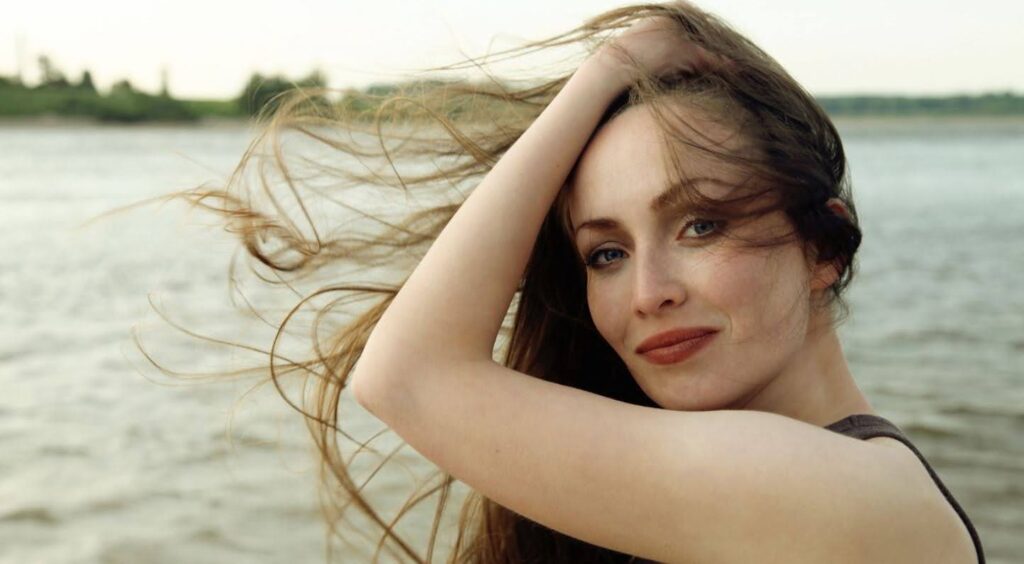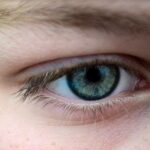Did you realize it’s possible to go chem-free in your hair care? I didn’t until recently. Somehow I didn’t take the time to think about this topic. But when I imagine those chemicals seeping into my skin…ugh!
Well, you know me – if I can forgo chemicals (read: nip detox necessity in the bud) plus save money in the process, I’m all in (provided the alternative really works). Not that I have ever washed my hair every single day, because my mom taught me that “if you wash your hair every day it will get used to it and “demand” daily washing”. So it was more like twice a week, or rather every fifth day or so, according to felt need.
*** Disclaimer: I am not a hippy, and have never been mistook for one. For me, my hair is like my crowning glory.
I love good, long, shiny, and healthy hair, and can’t stand hair loss, dull hair, dandruff, or split ends. While bad hair can be due to diet and poor health, weather, or water quality, I was amazed to hear that the culprit could actually be residue buildup from using styling products that can weigh hair down and cause dullness.
Enter the “No-poo method” – no shampoo, that is. There are people, apparently, who wash their hair with just water, and their hair thrives! Oh – and the “100 brushes a day thing” isn’t just an extravagant tradition, but meant to distribute your own body’s hair oil into the tips of your hair. True bio hair care.
So I started trying out this “method” a month ago. To be sure, “the method of not using commercial hair products” actually means “lots of alternative hair care methods”. Which means, lots of room for experimenting!
In order to experiment intelligently, it helps to understand what’s going on on your head. It’s important to know that the scalp produces a natural, waxy oil called sebum from glands in the skin. Some people produce more of this oil than others. Sebum plays an important role not only in keeping your hair healthy and shiny, but also in protecting your scalp from infection and helping keep it moist. However, when the body produces too much sebum, it can build up on your scalp.
This buildup can be very similar to dandruff, but whereas dandruff is a skin infection (called seborrheic dermatitis), build-up is not caused by inflammation, but a combination of hair-care products (shampoos, conditioners, styling creams, oils, gels, foams), skin cells, sweat, oils.
And scalp buildup can actually lead to hair loss, because it can clog hair follicles and prevent new hair from growing (Cirino, 2019).
My first experiment involved a product called “magnesium oil”.
I had read that “studies have shown that many forms of pityriasis (flaking of the skin) respond well to topical magnesium applications.”
Also, “thinning hair may be caused by calcification of the hair follicle, which can be rectified by magnesium use.” (Ashley, 2012)
Since I have some skin flaking, and feel like I’ve been loosing too much hair, I tried massaging magnesium oil into my scalp and then washing it off with lots of warm water.
That worked well for the skin flaking. But my hair felt “cakey” – it just seemed to still have gunk in it. So I did a lot of brushing (mainly while watching TV), and amazingly, that did help a lot.
On hair brushes
A good tip here is to get the right brush. Originally I had started conditioning my fine hair after washing to be able to untangle it easily. I find conditioner no longer necessary since discovering the “tangle teezer” which has bristles of four different lengths. It’s made of plastic, which is a bummer if you want to go plastic-free. On the other hand, it makes washing the brush super-easy. Trust me, you will want to wash/brush it frequently – namely whenever you’ve been brushing your hair and see the amounts of sticky dirt on it. It is actually essential for no-pooing to work for you.
I’m happy to feel my hair being less “chunky” now than before (and I’m brushing it a bit less).
Soon I want to start experimenting with different boar bristle brushes (including those reinforced with nylon), and see how those work out.
Did you ever wonder how those old-fashioned soft bristle hair brushes were supposed to work on anything other than baby hair?
Then check out this excerpt from Helen Follett Jameson’s The Woman Beautiful (1901):
“A brush should never be touched to the hair with other than a gentle, caressing motion; its first office is that of a polisher, to spread the natural oil exuding from the scalp over the hair, and give it a satiny gloss; and, secondarily, as a cleaner, to wipe off the surface soil, that is, the dust and dirt manifold of the polluted atmosphere in which it is the fate of a large part of mankind to pass their lives. The brush cannot penetrate to the scalp, through a heavy mass of hair, to remove any accumulation of dirt and dandruff there without carrying away with it very much of the crop of hair also; while, at the same time, if stiff enough to perform this office, it impairs the delicacy and integrity of the epidermis.
I don’t believe I want to go without a brush that massages the scalp. I’m quite sure my epidermis has gotten used to brushing and no longer that delicate!
But using two different hair brushes might be the way to go.
Breaking the shampoo habit
It turns out that my mom was right when she said that your hair gets used to daily washing. The harsh chemicals in commercial shampoo actually strip your hair of its natural oils. Your scalp takes note and starts producing more oil to make up for the loss. It’s the “demand and supply principle” at work (“supply and demand” seems to me the unnatural, backward version). Anyway, you end up wondering why your hair is oily and start washing it more often. And so you get into a vicious cycle. The hair product industry benefits.
The good news is, you can also break the cycle. You have to retrain your hair’s oil glands to where they “realize” that excess sebum is no longer needed. This can take anywhere from 2 to 8 weeks depending on how often you shampooed previously and what products you used.
So don’t get too discouraged if your hair feels a bit oily and “chunky” in the beginning. Daily brushing definitely helps to evenly distribute your hair’s natural oils to prevent buildup around the follicle, and so really helps ease the transition “from shampoo to no-poo”.
For this retraining period you might want to wear your hair in a pony tail.
The simplest shampoo/conditioner replacement
I’m not completely happy with magnesium oil as my only hair care product, so I also tried making my own very basic “shampoo and conditioner”.
“Shampoo” can be as simple as a table spoon of baking soda dissolved in warm water to be massaged into the scalp.
After rinsing it, use “conditioner” made of apple cider vinegar mixed in equal parts with water, applied with a spritz bottle and massaged into your hair. You may opt to avoid the scalp area, though (especially if you have cuts or lesions that would burn). Leave the apple cider vinegar on your hair for at least 5 minutes (or up to 15), then rinse off with lots of water.
It certainly works as a natural detangler, and as such I have found it to be a good, natural alternative conditioner.
Apple cider vinegar is also effective in removing buildup, and as a general revitalizer. As such, it can remove dullness and frizziness of hair (by managing the pH levels of the hair), and add lustre and life.
Apple cider vinegar is rich in vitamins and minerals and so provides some really good nutrients for your hair that can promote its growth and keep it healthy. Since it has anti-fungal and anti-microbial properties to boot, it can also keep dandruff and other infections like psoriasis at bay.
But isn’t apple cider vinegar caustic? Well yes, which is why you must be sure to dilute it with water.
Dilute it up to a ratio of 1:10, if you want.
Also, too frequent application could dry out your scalp, or make your hair brittle. It is usually recommended to use the apple cider vinegar rinse twice a month only.
So be sure to use apple cider vinegar always diluted with water, and not too often, and I promise it actually will make your hair softer, smoother, and shinier!
It is true that apple cider vinegar has a strong smell. But don’t worry about that – anything that doesn’t get washed out will evaporate on drying. Even my towel no longer smelled of vinegar after it had dried. It actually smelled fresh.
If you are worrying about what you might smell like, the answer is that by “going no-poo” you will smell like – you! And there is nothing wrong with that.
Of course you could always elect to use a dab of DIY perfume behind your ear or on your neck (DIY perfume: a drop of your favorite essential oil mixed in any neutral smelling natural oil). Or spread a drop of that oil on your palms and massage that into your hair. A tiny amount of good, natural oil goes a long way.
I still need to experiment to see how often I want to use the apple cider vinegar rinse. Maybe washing my hair twice a month will actually turn out to be enough (not counting washing out sweat with plain water after a workout)?
After all, as I was amazed to learn just today, “up until the late 1800s, people were recommended to wash their hair once a month. Decades later, the first synthetic shampoo was developed and that frequency increased to every two weeks, with daily shampooing becoming the norm by the 1970s.” (Nopoomethod, 2020). This daily shampooing ritual hasn’t been around for longer than 50 years!
Another tip for those with very oily hair: Some “no-pooers” use baby powder to sprinkle on and rub into their scalp (as if shampooing it) if their hair starts to get oily. They say it’s also great to help with styling! I haven’t tried this myself, since my hair has gotten to be far less oily than it has ever been, just over the course of the last month.
Also: If your scalp has “learned” to reduce its oil production, because you no longer wash daily or with harsh chemicals, you can be even gentler by using warm (not hot) water. This
Some other things to try
The people of India love to use coconut oil in their hair. It keeps their hair healthy and shiny, but the smell sure takes getting used to. I don’t think it would ever work outside of India!
I prefer coconut oil in my food. But I do plan on experimenting with using just a little coconut oil for my hair ends if I ever feel like they are getting too dry.
When I spent time in Mongolia, I learned that people there used to rinse their hair with nettle tea. Saying “nettle extract” sounds more sophisticated, but here it just means “tea”, really. The benefits of stinging nettles (which are not at all limited to hair) are actually well-known in traditional medicine across the world. Therefore stinging nettles have been even studied scientifically, and were found to be rich in silica and sulphur. This helps to make hair shinier and healthier. It also helps with combating hair loss, as well as stimulating hair re-growth. Rinsing hair with nettle extracts and water results in re-growth of lost hair and even contributes to restoring the original hair colour (Everescents, 2015).
All you need to do is wait for spring, collect freshly grown stinging nettles (with scissors and a bag to avoid being stung), boil them as though making tea (they no longer sting after being boiled), strain and then use the green liquid to rinse your hair with. Leave it on for a short time to reap the benefits. (You can easily dry nettles to use in winter, if you decide you like this method).
Eggs
I suppose you have heard that eggs are good for hair. Here is another excerpt from The Woman Beautiful (1901):
There is no better shampoo for the hair than an egg, well-beaten with about an ounce of water, and rubbed thoroughly into the scalp. It is not merely a detergent, cleansing the scalp and hair of the dirt, but is tonic in its effect and strengthens the scalp. The yolk contains natural food for the hair, iron and sulphur; while the white, being a mild alkali, finds its congenial mate in the oil from the sebaceous glands, and they mingle in a saponaceous lather.
So far I’ve never tried it (it seemed like a waste of egg) – but now this is on my to-try-list.
In conclusion, I can’t tell you how happy I am about this no-poo discovery. It saves me from a load of chemicals, from having to pay for them, from spending too much time in bathroom, from wasting hot water… And most of all, I have great hair!
Resources: (besides my own experience)
Ashley (Aug 31, 2012). DIY with topical magnesium. Retrieved on Feb 19, 2020 from https://www.ancient-minerals.com
Cirino, E. (Sep 11, 2019). What Causes Scalp Buildup and How Can I Treat It? Retrieved on Feb 11, 2020 from https://www.healthline.com
Fonda (Feb 19, 2011). Shampoo & Conditioner. Retrieved on Feb 11, 2020 from
Fonda (June 3, 2011). I do not wash my hair. Yes, you read that right. Retrieved on Feb 11, 2020 from http://www.mintandchili.com/
Everescents (May 24, 2015). Features and Benefits of Nettle. Retrieved on Feb 20, 2020 from https://www.everescents.com.au/
Jameson, H.F. (1901). The Woman Beautiful. Retrieved on Feb 20, 2020 from https://archive.org/
Nopoomethod (2020). The ‘No Poo’ Method. Retrieved on Feb 19, 2020 from https://www.nopoomethod.com/
Singh, A. (Sep 5, 2019). Apple Cider Vinegar Side Effects on Hair, Skin and more. Retrieved on Feb 20, 2020 from https://www.vitsupp.com/



